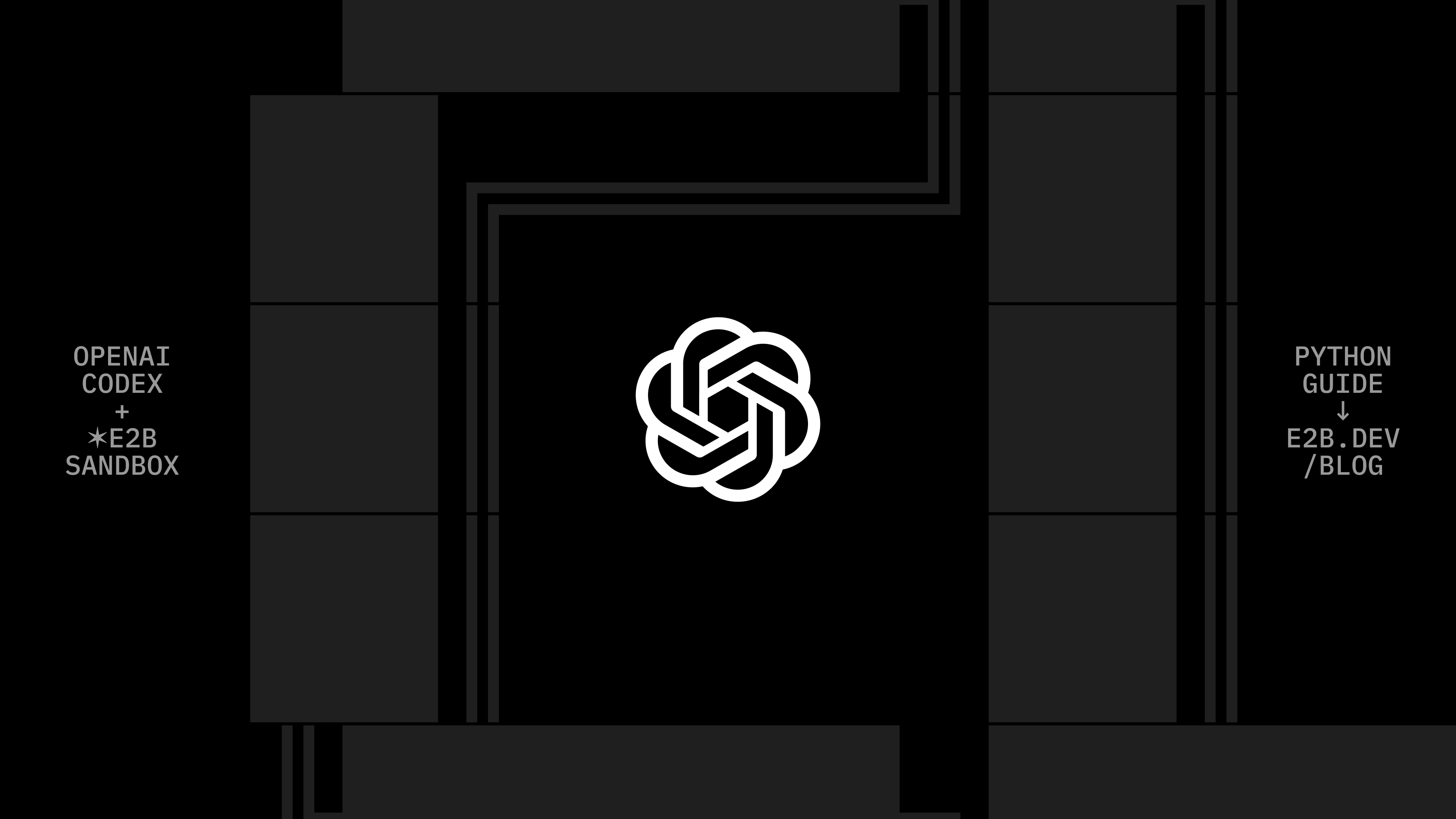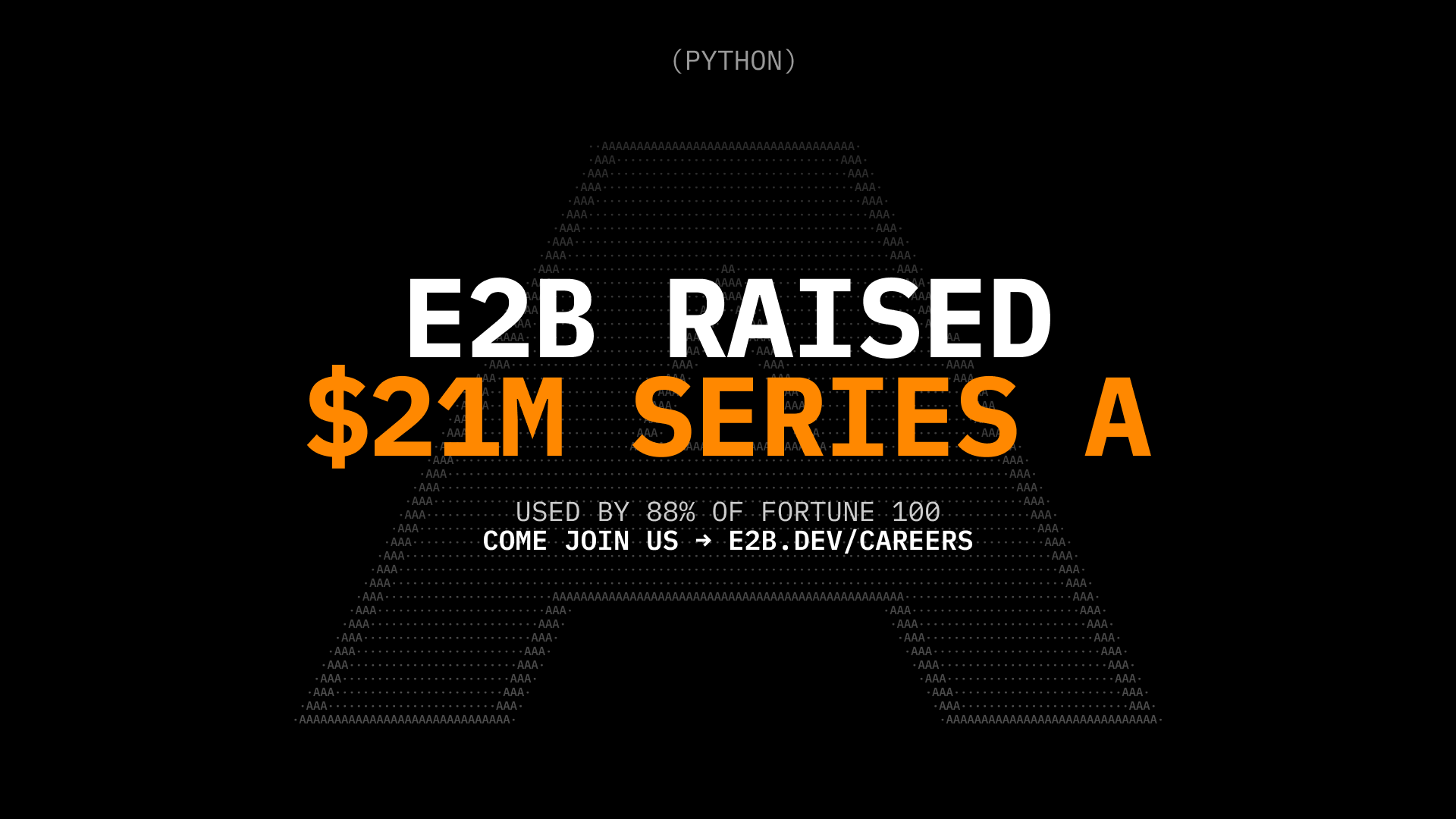Python Guide: Run OpenAI Codex in an E2B Sandbox

OpenAI Codex turns natural-language instructions into code edits and files. Run it inside an E2B Sandbox and you get an isolated, long-running environment where the agent can safely create files, install tools, and execute without interactive prompts.
What we’ll build
- Spin up an E2B sandbox from the prebuilt openai-codex template.
- Inject your OpenAI API key into the sandbox.
- Run a Codex prompt that creates a Hello World file.
- Print the output and shut the sandbox down.
See full example in the E2B Cookbook.
Components we’ll use
- E2B Python SDK – creates and controls the sandbox.
- Prebuilt template: openai-codex – Codex CLI is preinstalled.
- OpenAI API – used by Codex via OPENAI_API_KEY.
Prerequisites
- Python 3.11+
- E2B account +
E2B_API_KEY
Outline
- Create the project
- Add the files (pyproject.toml, main.py)
- Set E2B_API_KEY in .env
- Install with pip and run
1) Create the project
mkdir openai-codex-in-sandbox-python
cd openai-codex-in-sandbox-python
mkdir -p src/openai_codex_in_sandbox_pythonCreate and commit .gitignore before .env so secrets never enter git history.
Target structure:
openai-codex-in-sandbox-python/
├─ src/
│ └─ openai_codex_in_sandbox_python/
│ └─ main.py
├─ pyproject.toml
├─ .gitignore
└─ .env2) Files to add
File: pyproject.toml
[project]
name = "openai-codex-in-sandbox-python"
version = "0.1.0"
description = "Add your description here"
readme = "README.md"
requires-python = ">=3.11"
dependencies = [
"e2b",
"python-dotenv",
]
[build-system]
requires = ["hatchling"]
build-backend = "hatchling.build"File: src/openai_codex_in_sandbox_python/main.py
This script loads .env (so the SDK sees E2B_API_KEY), creates the sandbox from the openai-codex template while injecting your OpenAI key, runs a Codex exec prompt that generates index.html, prints the result, and then shuts the sandbox down.
Load configuration and SDK:
from dotenv import load_dotenv
from e2b import Sandbox
load_dotenv()Create the sandbox (OpenAI key passed inline) and log its ID:
template_name = 'openai-codex'
sbx = Sandbox(
template_name,
envs={
"OPENAI_API_KEY": "<your api key>",
},
timeout=60 * 5, # 5 minutes; match README (remove this line to match the file exactly)
)
print("Sandbox created", sbx.sandbox_id)Run a Codex prompt that creates a file (no per-command timeout):
# Print help for Codex
# result = sbx.commands.run('codex --help', request_timeout=0, timeout=0)
# print(result.stdout)
# Run a prompt with Codex
result = sbx.commands.run(
"codex exec --skip-git-repo-check --dangerously-bypass-approvals-and-sandbox 'Create a hello world index.html'",
timeout=0,
)
print(result.stdout)Clean up:
sbx.kill()File: .gitignore
.venv/
.env
__pycache__/
*.pycFile: .env
E2B_API_KEY="YOUR_E2B_API_KEY"3) Set up and install
python -m venv .venv
# macOS / Linux
source .venv/bin/activate
# Windows (PowerShell)
# .venv\Scripts\Activate.ps1
pip install -e .4) Run the example
python src/openai_codex_in_sandbox_python/main.pyExpected: console output from Codex. The generated index.html lives inside the sandbox filesystem.
See full example in the E2B Cookbook.
Secure AI Sandbox




